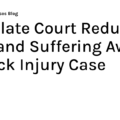Dechert Re:Torts is a monthly newsletter covering news and developments related to product liability and mass torts litigation.
- Supreme Court to Resolve Availability of (“RICO”) Claims to Personal Injury Plaintiffs
- Supreme Court Confronts a Circuit Split on Post-Removal Complaint Amendments
- Supreme Court of California to Consider Duty to Innovate
- Perennial Plaintiffs’ Expert Excluded For “Methodological Shapeshifting”
Hot Topics
Supreme Court to Resolve Availability of RICO Claims to Personal Injury Plaintiffs
On April 29, 2024, the Supreme Court granted certiorari in Medical Marijuana, Inc. v. Horn, No. 23-365, 2024 WL 1839091 (U.S. Apr. 29, 2024), a case that could clarify the scope and applicability of Racketeer Influenced and Corrupt Organizations Act (“RICO”) claims to personal injury plaintiffs. The impetus for the Supreme Court’s intervention in the case is a widened circuit split over the statute’s application to economic harm from personal injuries.
RICO’s civil cause of action permits a party to bring a claim for treble damages for racketeering activity but does not permit claims for personal injury. 18 U.S.C. § 1964(c). Instead, RICO civil remedies are provided where a person is “injured in his business or property” through a violation of the statute. Id. Courts of appeal are divided as to whether damages arising from personal injuries, such as medical expenses and lost wages, are nevertheless recoverable if they can fairly be construed as also being “injury to business or property.” The Sixth, Seventh, and Eleventh Circuits hold that RICO does not permit such damages claims, while the Second Circuit in Horn v. Medical Marijuana, Inc. aligned with the Ninth Circuit and found that such damages are recoverable under RICO. 80 F.4th 130, 136–37 (2d Cir. 2023).
Horn involves a plaintiff who was fired from his job as a truck driver after testing positive for THC. The plaintiff alleges that he tested positive for THC after consuming defendants’ products, which he claims were falsely labeled as THC-free. The plaintiff brought claims alleging that the defendant product manufacturers were involved in a RICO conspiracy that caused plaintiff economic harm. The district court initially dismissed the plaintiff’s RICO claims consistent with the approach of the Sixth, Seventh, and Eleventh Circuits. The Second Circuit unanimously reversed, finding that that Horn’s loss of employment and benefits constituted an injury to his “business or property,” thus granting him standing to pursue a RICO action. The court held that, notwithstanding that RICO “implicitly excludes recovery for personal injuries,” whether damages arise from injury to “business or property” depends on the nature of the harm, not the source. Horn, 80 F.4th at 137–39. Accordingly, the Second Circuit declined to read an “antecedent-personal-injury bar” into the statute’s requirements. Id.
Should the Supreme Court side with the Second and Ninth Circuit, plaintiffs may seek to assert RICO claims more broadly, including in the context of product liability actions, which frequently include allegations that an allegedly defective product caused injury resulting in medical expenses or lost wages.
Takeaway: The Supreme Court’s decision in Medical Marijuana, Inc. v. Horn could give finality to the question of whether RICO claims (and the treble damages that accompany them) are available to personal injury plaintiffs.
Jurisdictional Jabber
Supreme Court Confronts a Circuit Split on Post-Removal Complaint Amendments
In Royal Canin U.S.A., Inc. v. Wullschleger, the U.S. Supreme Court will address whether plaintiffs can destroy federal jurisdiction by amending their complaint after removal.
Royal Canin involves claims that plaintiffs overpaid for prescription pet food products, which plaintiffs claim do not actually contain medicine and were not reviewed by the FDA. In their Missouri state court complaint, plaintiffs included allegations that defendants violated the federal Food, Drug and Cosmetic Act. After defendants removed the case to federal court on federal question grounds and successfully defended the removal on appeal, plaintiffs amended the complaint to eliminate their federal law allegations and then moved for remand to state court.
On appeal, the Eighth Circuit held that plaintiffs’ post-removal amendments destroyed federal question jurisdiction and required remand. Wullschleger v. Royal Canin U.S.A., Inc., 75 F.4th 918, 920 (8th Cir. 2023). As to plaintiffs’ state law claims, the court held that “the possibility of supplemental jurisdiction vanished right alongside the once-present federal questions.” Id. at 924.
As the Royal Canin defendants argued in support of their cert petition, the Eighth Circuit’s decision departs from the law in other circuits. Every other court of appeal that has addressed the question has held that district courts should look to the complaint at the time of removal, and not to a post-removal amended complaint, to evaluate subject matter jurisdiction. See, e.g., Collura v. City of Philadelphia, 590 F. App’x 180, 184 (3d Cir. 2014); Smith v. Wynfield Dev. Co., 238 F. App’x 451, 455 (11th Cir. 2007); Sparta Surgical Corp. v. Nat’l Ass’n of Sec. Dealers, Inc., 159 F.3d 1209, 1213 (9th Cir. 1998). Other circuits have also held that a district court may retain supplemental jurisdiction over state law claims even after dismissal of the federal claims on which removal was based. See, e.g., Savage v. W. Va. Dep’t of Health & Human Res., 523 F. App’x 249, 250 (4th Cir. 2013); Grispino v. New Eng. Mut. Life Ins. Co., 358 F.3d 16, 19 (1st Cir. 2004); Harper v. AutoAlliance Int’l, Inc., 392 F.3d 195, 210–11 (6th Cir. 2004).
Allowing plaintiffs to manipulate the forum through a post-removal complaint amendment would subvert defendants’ removal rights and the efficient operation of removal statutes. Royal Canin provides a rare opportunity for Supreme Court guidance on these issues because remand decisions are generally not reviewable. The Court has been willing to restrict forum shopping tactics in the past. See e.g., Bristol-Myers Squibb Co. v. Superior Court of Cal., 582 U.S. 255, 265–69 (2017) (confirming that due process limitations on state courts’ personal jurisdiction required dismissal of cases filed against corporations in jurisdictions with only tenuous connections to the dispute); see also Ford Motor Co. v. Mont. Eighth Jud. Dist. Ct., 592 U.S. 351, 369 (noting that the Bristol-Myers plaintiffs were “forum-shopping”).
A ruling in Royal Canin could have broad application to threshold jurisdictional disputes, including in product liability, toxic tort, and consumer class action cases where removals, early jurisdictional motions, and the exercise of supplemental jurisdiction are all commonplace. Royal Canin will be addressed during the October 2024 term.
Takeaway: Royal Canin will allow the Supreme Court to resolve a circuit split and provide guidance on jurisdictional and forum manipulation issues that regularly arise in product liability, toxic tort, and class action litigations. The case offers the potential for the Court to ratify the majority rule that plaintiffs cannot use post-removal complaint amendments to destroy federal question jurisdiction or preclude supplemental jurisdiction over state claims.
———————————————————
Supreme Court of California to Consider Duty to Innovate
In our March 2024 issue, we covered the petition to the Supreme Court of California regarding a Court of Appeals decision in Gilead Tenofovir Cases, 98 Cal. App. 5th 911(1st Dist. 2024), which permitted plaintiffs to move forward with a claim that Gilead Sciences, Inc. breached a duty of reasonable care based on an alleged delay in the development of a new drug. On May 1, the Supreme Court of California took up Gilead’s appeal, with opening merits briefs due in mid-July. A decision in Gilead should provide additional guidance on the contours of manufacturers’ duties under California tort law, particularly with respect to claims that a manufacturer should have developed an alternative or safer version of a product that plaintiffs concede was not defective.
Experts Examined
Perennial Plaintiffs’ Expert Excluded For “Methodological Shapeshifting”
The MDL court overseeing claims that the herbicide paraquat dichloride causes Parkinson’s disease excluded the opinions of Dr. Martin Wells, a perennial plaintiffs’ expert and the plaintiffs’ sole general causation expert in four test cases. In re Paraquat Prod. Liab. Litig., 2024 WL 1659687, at *1–2 (S.D. Ill. Apr. 17, 2024). The Paraquat court found Dr. Wells’s opinions to be unreliable because his “methodological contortions and outright violations of the scientific standards he professed to apply” plainly could not meet “the same level of intellectual rigor . . . that would be required of him and his peers in a non-litigation setting.” Id. at *15.
The district court’s thorough opinion laid out many deficiencies in Dr. Wells’s analysis, starting with an imprecise and shifting definition of the exposures purportedly “causally related to Parkinson’s disease,” which left “[t]he meaning of his opinion . . . ‘impossible to discern.’” Id. at *24–25. The court also found that his opinions were not the product of a discernible, consistent, and replicable process. While Dr. Wells appeared to employ “well-accepted methodological tools,” including meta-analysis and a Bradford Hill framework, id. at *33, he could not demonstrate that he “faithfully applied the necessary steps of his chosen methodology as Daubert requires.” Id. at *28. Among a host of methodological flaws inventoried in the opinion, Dr. Wells’s meta-analysis failed to predefine and consistently apply criteria for selecting studies, which the court deemed “transparently reverse-engineered” to favor a specific outcome. Id. at *16, 18, 26, 33. The court similarly criticized Dr. Wells’s self-serving and “standardless presentation” of the Bradford Hill factors that framed his causation analysis, which was “virtually non-falsifiable,” thus violating “one of the most basic requirements of the scientific method.” Id. at *35. The court also observed that Dr. Wells’s opinions were “in direct conflict” with the general scientific community – “an evidentiary red flag.” Id. at *41.
The court’s assessment is a reminder that using “the label of a reliable methodology” does not otherwise transform ipse dixit or flawed analysis into admissible expert evidence. Id. at *33. Rule 702 requires experts not only to select reliable methodologies, but also to reliably apply them. Expert assessments that rely on unwritten standards and “holistic” reviews are “all too easy . . . to manipulate . . . to support a desired conclusion of causation, and far too hard for an ensuing expert to replicate and rigorously test [the expert’s] analytic approach.” Id. at *28, 33.
Takeaway: Experts run the risk of exclusion by using results-driven analysis, such as opaque methodologies, malleable criteria, cherry-picked data, and inconsistent standards.



